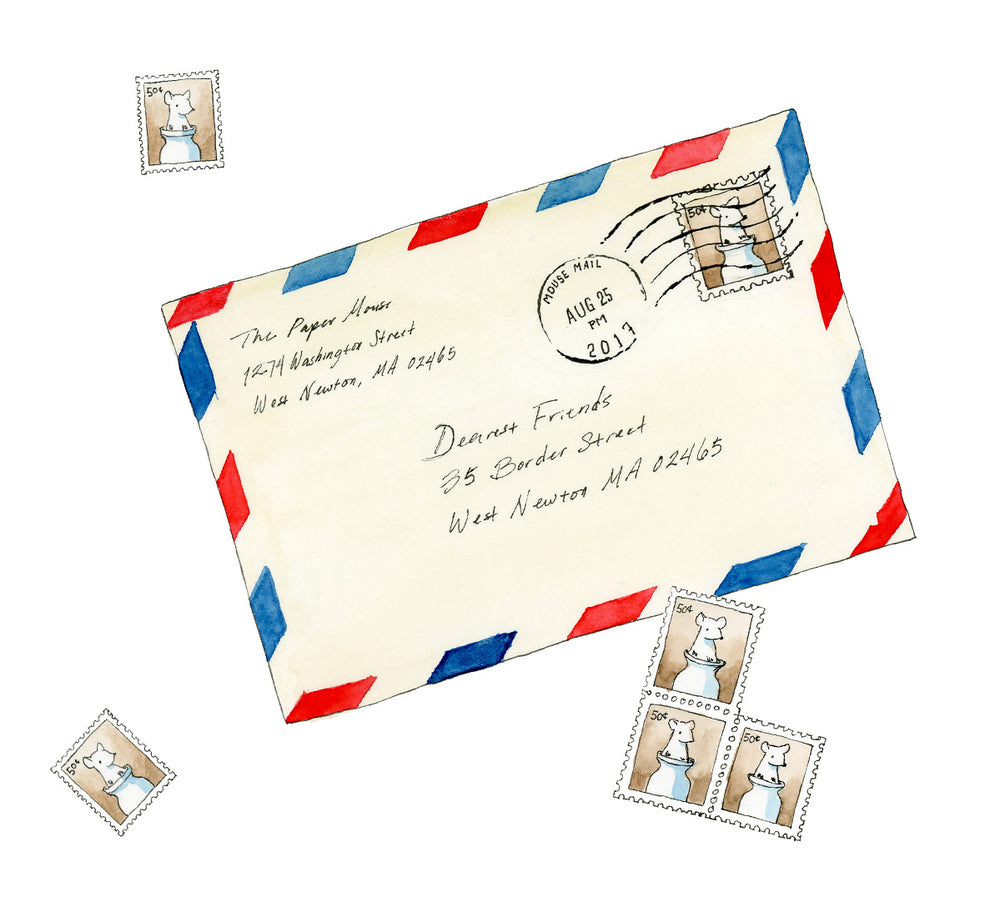A Brief Explanation of Bottled Inks

Visitors to our shop often gravitate toward the ink section, with rows of little glass bottles full of enticing colors. But the next question is usually “What do I do with these?” The vast array of ink options can be confusing for the uninitiated. In this overview, we explain the differences between bottled inks for both fountain pens and dip pens.
Fountain Pens vs. Dip Pens
The first point of confusion around bottled inks is that there are two different kinds of pens that use them. Fountain pens and dip pens can look quite similar at a glance—both have pointed metal nibs with a slit down the middle and a breathing hole—but the way the pens work and the inks they use are very different.
Dip pens, as the name suggests, are dipped directly into a bottle of ink each time you want to write. Usually used for calligraphy or drawing, dip pens use interchangeable metal nibs that can range from a very stiff, fine point for drawing tiny lines, to flat italic nibs used for italic lettering, to very flexible nibs for creating swoops and line variations. The nib sits inside a handle called a nib holder, and there’s no internal source of ink.
Fountain pens, on the other hand, have a reservoir of ink inside and a feed mechanism that lets you write without constantly dipping your pen (check out our post on fountain pen basics to learn more about how a fountain pen works). The feed sits directly beneath the nib, which is usually less flexible than that of a dip pen and isn’t built for hard pressure. Fountain pens can be refilled from a bottle of ink, but the reservoir and feed mean that you don’t have to keep dipping them every time you write. Instead, the feed provides a constant flow of ink from the reservoir inside to the nib.

Fountain Pen Inks
Fountain pen inks are thin, water-based inks that will flow easily through the feed of the pen without clogging it. It’s important to note that inks formulated for dip pens can’t be used in a fountain pen. These thicker calligraphy inks will clog up the delicate feed of a fountain pen and ruin the mechanism. Luckily, there are many, many types of inks out there made specifically for fountain pens, so the sky’s the limit in terms of ink colors. (Check out our ink color chart to see the whole rainbow of inks we carry!)
In addition to these colorful options, some ink companies produce specialty fountain pen inks with unusual properties. Sailor's pigmented inks, for example, are permanent and waterproof. Also available these days are shimmer inks, which have small sparkly particles that shimmer on the page, and multicolored sheening inks, which have a base color on the bottom and dry with a metallic sheen on top.

Dip Pen Inks
Drawing and calligraphy inks for dip pens tend to be thicker and more viscous than fountain pen inks. Since a dip pen has no reservoir and feed to hold ink, the ink has to cling to the underside of the nib instead. Like fountain pen inks, dip pen inks come in many colors and varieties, including specialty inks like shimmer ink and glow-in-the-dark ink.
Inks that are made for fountain pens are usually a bit too watery to cling to a dip pen, but there’s no harm in testing different kinds of inks. Because they don’t have a feed with the potential for clogging, dip pens can write with a much wider variety of inks than fountain pens. As long as the ink can be cleaned off the nib, it’s worth trying! Since dip pen nibs come in so many sizes and shapes, inks will also behave differently from nib to nib, so a little experimentation may be necessary. If you have a favorite fountain pen ink that you want to try with a dip pen, it can also be thickened with gum arabic to make a more viscous ink.

Ready to give bottled inks a try? Check out our Bottled Inks collection to see them all, plus our Calligraphy and Lettering collection for a selection of dip pen inks.



Leave a comment